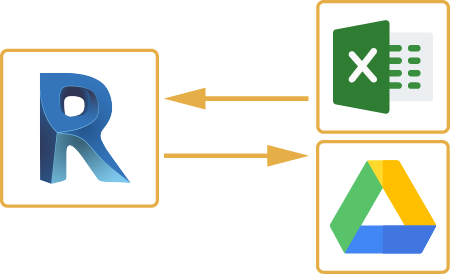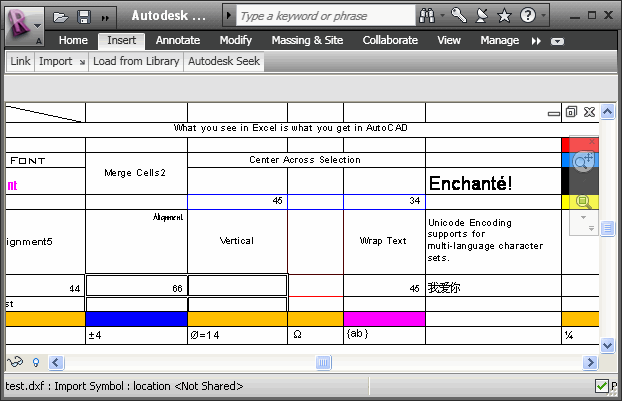Mastering the Art of Information Integration: Just How to Seamlessly Import Excel Record Into Revit
In this write-up, we will certainly lead you through the process of understanding the art of data integration. Get all set to prepare your Excel data easily and follow our step-by-step overview to import data right into Revit. With our finest techniques, you'll attain information assimilation success in no time.
Understanding the Significance of Data Integration in Revit
Understanding the relevance of information integration in Revit is important for seamless importing of Excel data. When you integrate information from Excel right into Revit, it enables you to successfully manage and update details throughout the entire task. This combination ensures that your design and construction process is precise and up-to-date.
By integrating data, you can quickly import and update criteria, timetables, and also geometry in Revit. This gets rid of the requirement for hand-operated information entrance, saving you time and decreasing the threat of errors. With Revit's information assimilation capabilities, you can keep uniformity and precision in your project, while also improving collaboration amongst team participants.

Checking Out the Excel Data Format for Revit Assimilation

In order to successfully integrate Excel documents into Revit, it is critical to guarantee that the data is formatted correctly. This includes correctly classifying columns and rows, in addition to structuring the data in a way that is suitable with Revit's data schema. Revit makes use of specific specifications and categories to organize data, so it is vital to straighten the Excel data with these criteria to ensure a seamless integration.
Furthermore, it is essential to note that Revit just supports specific information types when importing from Excel. These include text, numbers, and dates. Any various other information kinds, such as solutions or conditional formatting, will not be identified by Revit and might cause concerns throughout the combination procedure.
Preparing Your Excel Data for Seamless Import Into Revit
To ensure a smooth assimilation procedure, you'll need to properly layout and tag the columns and rows in your Excel information prior to importing it into Revit. Begin by analyzing your Excel data and click here for info identifying which rows and columns go to this web-site have pertinent info for your Revit task.
Next, make certain that the data in each column is correctly formatted. As an example, if you have a column for measurements, make sure that all dimensions are regularly formatted in the very same devices of measurement. Revit depends on consistent formatting to accurately interpret and import data.
Additionally, it is necessary to look for any empty cells or incongruities in your information. Revit may not have the ability to check out or import information from cells that are empty or have errors. It is suggested to assess your Excel information and clean up any type of disparities prior to importing it into Revit.
Step-By-Step Guide to Importing Excel Info Into Revit
As soon as you have actually effectively formatted and classified your Excel information, you can quickly import it right into Revit by following this step-by-step overview. To start, open Revit and navigate to the "Insert" tab. Click "Import CAD" and select "Import Excel" from the dropdown menu. A brand-new home window will certainly show up, asking you to locate the Excel documents you desire to import. Browse your computer system and choose the Excel documents, then click "Open."
Following, a dialog box will certainly appear, enabling you to personalize the import setups. Right here, you can choose the worksheet you wish to import, specify the series of cells to import, learn the facts here now and pick the proper devices for your information. When you've made your options, click "OK" to proceed.
Revit will certainly currently display a preview of your Excel data. Take a moment to evaluate the sneak peek and make sure that every little thing looks correct. If needed, you can make modifications to the import setups by clicking on the "Setups" switch.
Ideal Practices for Data Combination Success in Revit
Make sure you follow these ideal methods to guarantee effective combination of data in Revit. It is crucial to organize your data in Excel before importing it into Revit. Be mindful of the units and information types when mapping the data, as any type of inconsistencies can lead to mistakes in the combination procedure.
An additional important method is to routinely confirm and upgrade your information. Additionally, make usage of information validation tools within Revit to identify any kind of mistakes or incongruities in the integrated information.
Lastly, it is suggested to develop a clear process for data assimilation. This consists of specifying responsibilities and functions, setting up an interaction channel in between staff member, and establishing a regular cadence for data updates and reviews. By complying with these finest practices, you can ensure a seamless and successful combination of information in Revit, inevitably boosting the performance and accuracy of your job.
Final Thought
In verdict, mastering the art of information combination is important for seamless import of Excel files into Revit. Comprehending the value of data assimilation in Revit is the initial step towards effective combination.
When importing data from Excel into Revit, it is crucial to comprehend the documents layout and just how it can impact the combination procedure (revit tool). Revit makes use of particular specifications and categories to arrange information, so it is crucial to line up the Excel data with these criteria to guarantee a seamless integration
Be mindful of the systems and information kinds when mapping the data, as any discrepancies can lead to errors in the integration process.
Furthermore, make use of information validation tools within Revit to recognize any type of errors or disparities in the incorporated data.
